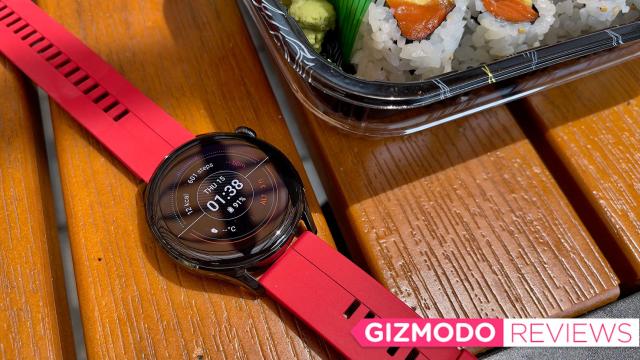Huawei picked a real weird time to release the Huawei Watch 3. On the one hand, you have Samsung and Google completely upending the Android smartwatch space, while Apple firmly remains the smartwatch of choice for iOS users. Fitbit’s been gobbled up by Google. There isn’t a whole lot of space for flagship smartwatches running a proprietary OS, and yet the Watch 3 runs Huawei’s HarmonyOS 2. What you end up with is a smartwatch that seems like it wants to pick up where Samsung’s newly abandoned Tizen OS left off, but falls short due to circumstances outside of Huawei’s control. The result is a smartwatch that is somehow both impressive and disappointing all at once.
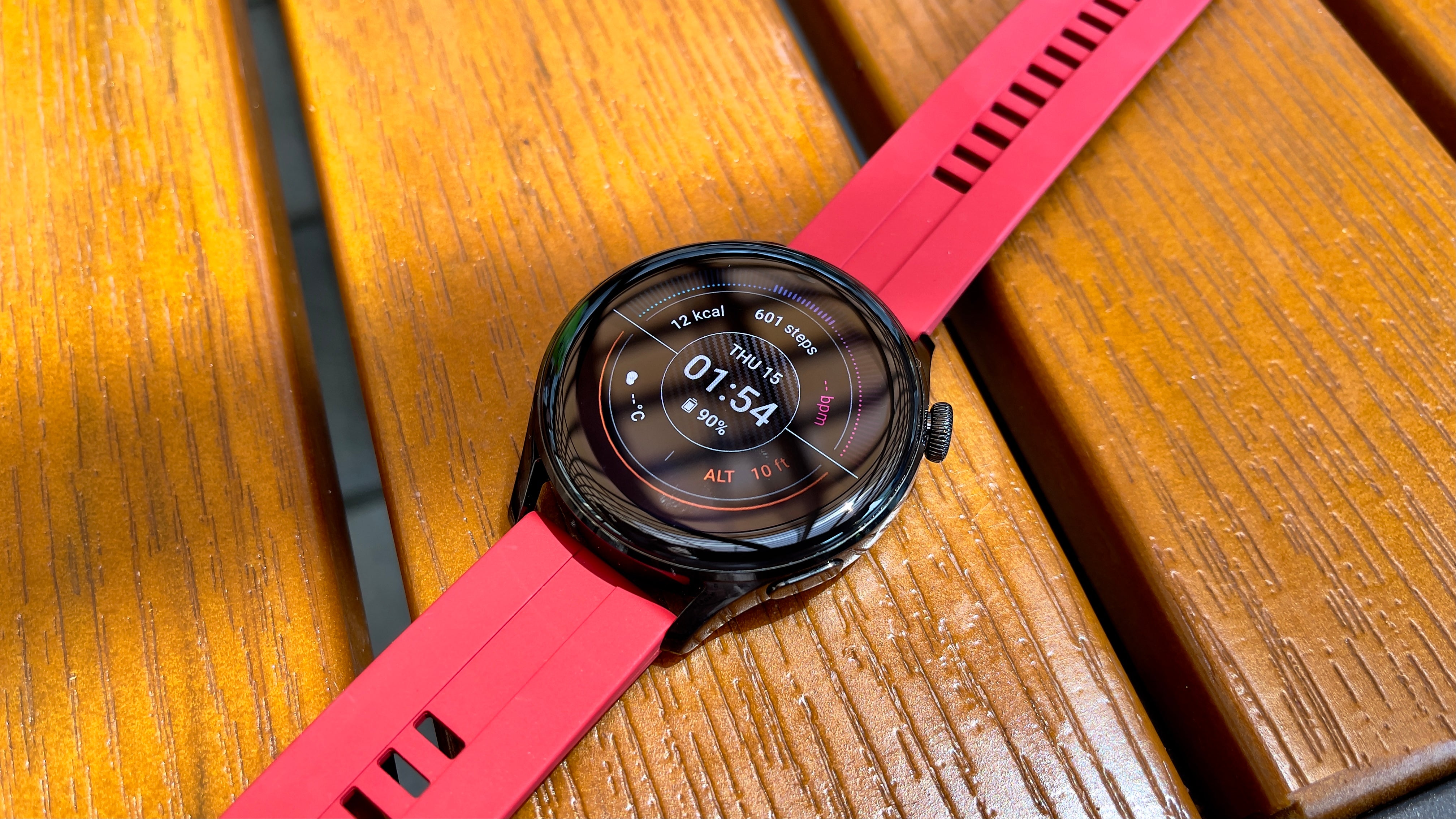
Huawei Watch 3
What is it?
Huawei's new smartwatch running HarmonyOS 2
Price
£350 ($650)
Like
Excellent build. Beautiful display. HarmonyOS 2 is pretty neat. Snappy processor. Decent fitness tracking.
No Like
Android setup is wonky. Many marquee features are limited due to trade ban. The broadcast workout feature is the dumbest fitness feature I've ever been subjected to.
Editor’s Note: Stay tuned for local Australian pricing and availability.
Hardware Isn’t Huawei’s Problem
I’ll cut to the chase: This is a good-looking smartwatch. There are several versions of the Huawei Watch 3; the review unit I tested is the base model. The 1.43-inch AMOLED circular touchscreen is gorgeous, and notifications are a breeze to read. Colours are vibrant, and the little animations for actions like charging are quite pretty. It’s made of stainless steel and ceramic, which feels nice against your skin.
All in all, I found it decent for a 46mm smartwatch — which is to say it was tolerable, though less than ideal for my tiny wrists. Like the OnePlus Watch, I found it a little uncomfortable during longer runs and had to wear it a bit higher on my arm than I would a 42-44mm watch. (It is, however, lighter than the 73.71 g OnePlus Watch at 48.19 g.) This is definitely a watch with a more masculine aesthetic and may not be well-suited for the more petite-wristed among us. But aesthetic preferences aside, this is a well-made smartwatch.
As far as specs go, the Huawei Watch 3 is solid. You have all the basic sensors, including built-in GPS and heart rate-monitoring, plus more advanced ones to measure SpO2 and skin temperature. These enable health-tracking features like sleep-tracking, in-depth fitness insights, stress and blood oxygen level measurements, and VO2 Max. The watch also has 2GB of RAM, which makes for snappy app loading and swiping between menus. It’s also swim-proof with 5ATM of water resistance and supports Bluetooth, LTE, and Wi-Fi. (Note: I couldn’t test cellular connectivity, as eSIM support was unavailable when paired with my iPhone.)
It is missing a few things, though. For instance, NFC payments are a no-go, and Huawei’s Celia voice assistant doesn’t work in the U.S. In fact, several features aren’t available at launch, including gesture controls and a hand-washing timer (a la Apple Watch). Others are limited depending on where you live or what phone you have.
For instance, Huawei’s MeeTime calling is only available in some European and Asian countries, as well as Saudi Arabia and South Africa. Right now, the Huawei Watch 3 isn’t actually available in the U.S., because of the Trump-era ban on the company doing business Stateside. It is, however, available in the UK for £350.
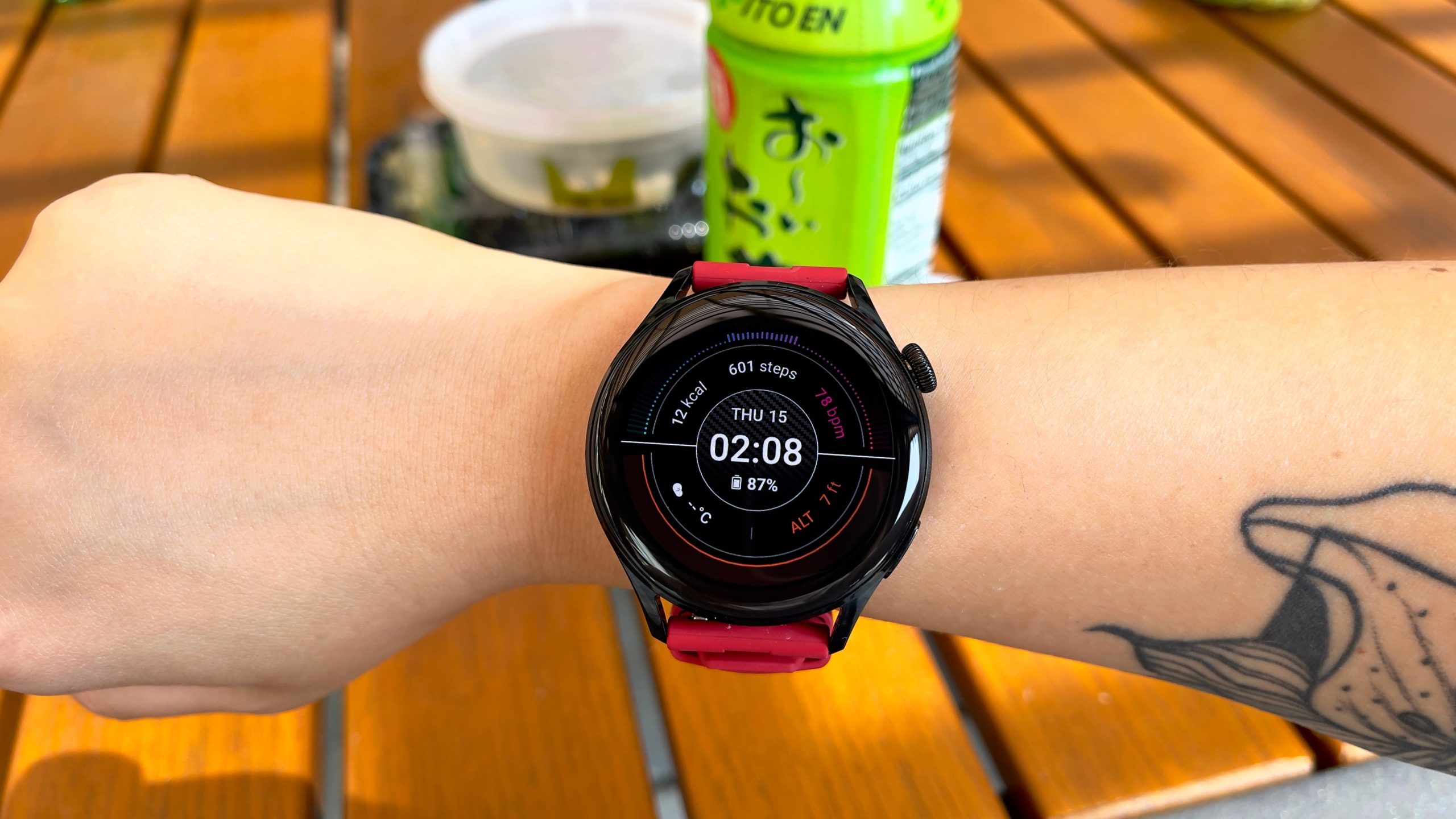
The Watch 3 has an estimated battery life of three days, but in reality, I only ever got around two days with normal usage. That’s not too shabby, though, especially when you consider the Apple Watch still only gets a day and Samsung’s watches also only get around two days of battery life. While on vacation, the watch managed to track a 90-minute 6 km walk through Newport’s Cliff Walk with less than 30% battery and didn’t crap out on me until I got back to my hotel several hours later. As for charging, going from zero to 100% takes about 90 minutes, which is par for the course for the average smartwatch.
So as far as the basics go, Huawei’s made a pretty good device. I’d go as far as to say the hardware is actually excellent. But the hardware was never going to be the Huawei Watch 3’s problem.
It’s Tizen OS All Over Again
The Huawei ban is too long of a saga to recap in a smartwatch review. The short of it is former President Trump issued an executive order in 2019 that banned Huawei from using U.S.-made tech in their gadgets. That means it cut Huawei’s access to Google’s Android operating system and Google Mobile Services. So really, Huawei had no choice but to build HarmonyOS 2. Taking that into consideration, I’m more inclined to be generous about HarmonyOS’s failings — but only slightly.

But first, here’s what’s good about HarmonyOS. Huawei has clearly studied what worked about watchOS, Wear OS, and Tizen OS. When you press the rotating crown (another element it pilfered from Apple), it brings up an app grid that’s easy to navigate and understand. Meanwhile, when you swipe left you can access four customisable widgets. Swiping up brings up notifications, swiping down gets you a quick menu to settings, and swiping right brings up the weather. Everything is blazing fast, and if you’ve ever used a smartwatch, using the Watch 3 won’t require too much of a learning curve.
Setting up the watch on iOS was also easy, as you can download the Huawei Health app directly from the App Store. The process is not so easy for non-Huawei Android phones, which requires you to download the Huawei App Gallery first. For a lot of people, that’ll be more trouble than it’s worth given it’s much easier for Android users to access the Google Play store.
I was spared this grief as I tested with my iPhone 12 Pro Max, though you can read an in-depth account of how annoying the process is here. This is clearly because of the Huawei ban, but iOS users aren’t completely exempt from that experience. During setup, I had to grant so many permissions and scroll through lengthy terms of service for each and every single feature.
There’s nothing wrong with how HarmonyOS 2 functions. Apps launch! They do what they’re supposed to! It’s the ways in which HarmonyOS 2 is limited. There are no real apps to download, for instance. No Uber, no digital wallet, no social media, no Strava — nada. That’s not necessarily horrible. It sort of feels like using a fancier version of FitbitOS, minus any recognisable third-party apps. It just means there’s not a lot this watch can do outside of Huawei’s native apps. For instance, there are no music apps I can use for offline playlists. While Android users might be able to use Huawei Music, this simply isn’t an option on iOS. So despite the fact this technically supports eSIM, has built-in GPS, and Bluetooth accessories, I can’t actually leave my phone at home during a run.
It also means you’re slightly limited when it comes to notifications. You can receive them, sure, and they’re highly readable. You can also receive calls. However, forget about quick replies or launching the corresponding app on your wrist. These can be mere quibbles or complete deal breakers, depending on how you want to use your smartwatch.
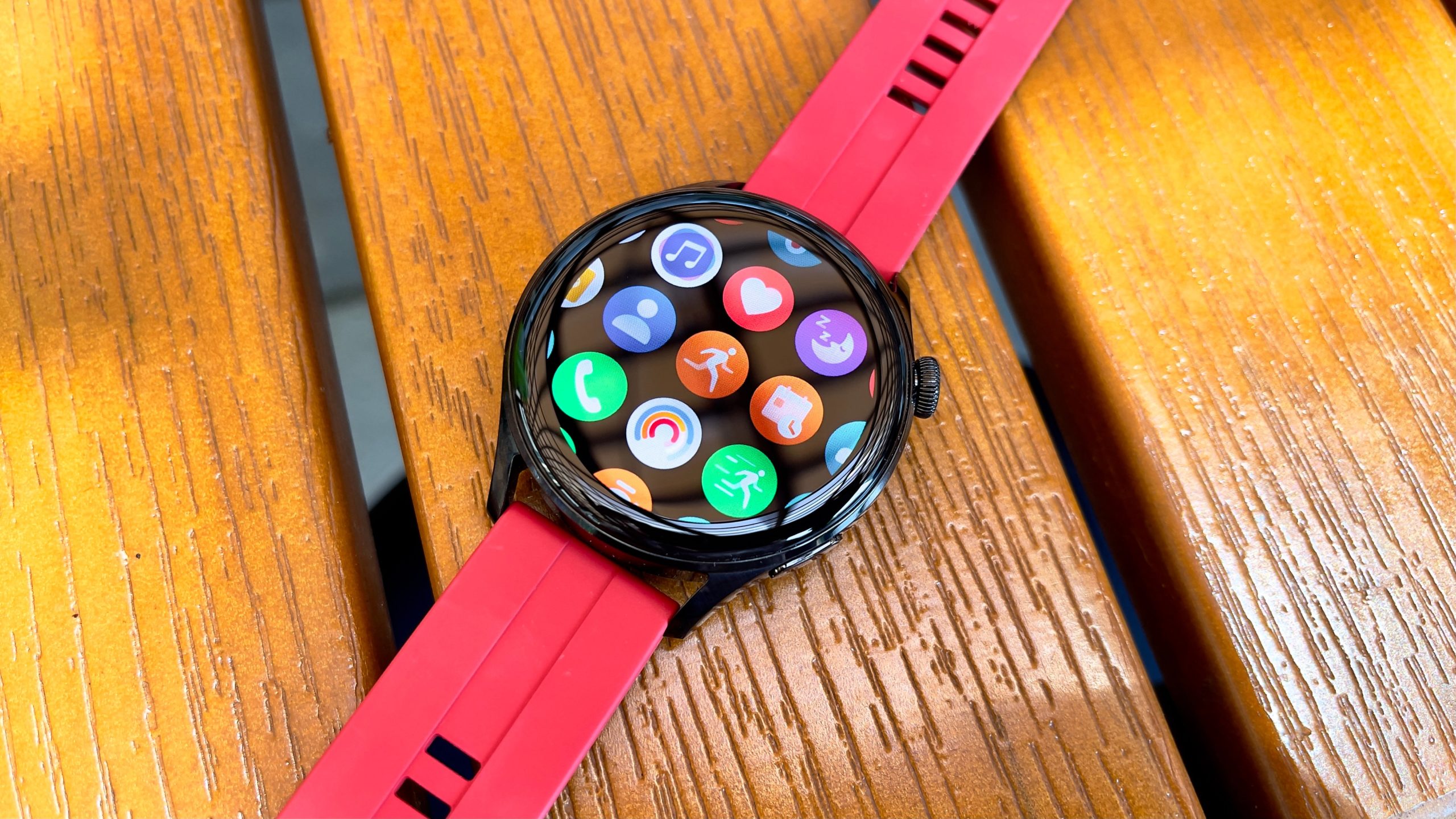
HarmonyOS feels like a mish-mash between FitbitOS and earlier iterations of Tizen OS. Everything works, but the lack of third-party app support means this is simply a more visually appealing, glorified fitness tracker. Once again, you have a proprietary OS that’s actually an appealing alternative to the current Wear OS… but it just doesn’t have room to grow. It’s literally Tizen OS all over again.
That might’ve worked if Wear OS had continued on its trajectory of the past few years. However, now that Samsung’s thrown in the towel on Tizen and is working with Google to create a unified platform, I’m not sure these weaknesses will fly under the radar in the new Android smartwatch era — especially not if Google and Samsung deliver.
Good Health-Tracking, If You Don’t Mind Some Quirks
While testing the Watch 3’s health and fitness features, I thought a lot about the OnePlus Watch, which is objectively the worst smartwatch I’ve ever had the misery of testing. This is both a good and bad thing.
The good is this is probably what I think the OnePlus Watch was trying to be. It actually works. The bad is that it occasionally has some of the same problems.
Take sleep-tracking. When sleep data syncs to the Huawei Health app, you actually get a detailed breakdown of your sleep stages, a sleep score, and some insight into what the metrics mean. When it syncs. Some days I’d wake up and see that on my wrist the watch had clearly recorded my sleep. When I opened the Huawei Health app, it was a toss-up as to whether that information would sync. Most nights it did! Just once in a while, it wouldn’t or would pop up hours or several days later. That’s not exactly helpful to find out my data from last Thursday finally uploaded a week later. At that point, I’m beyond caring.
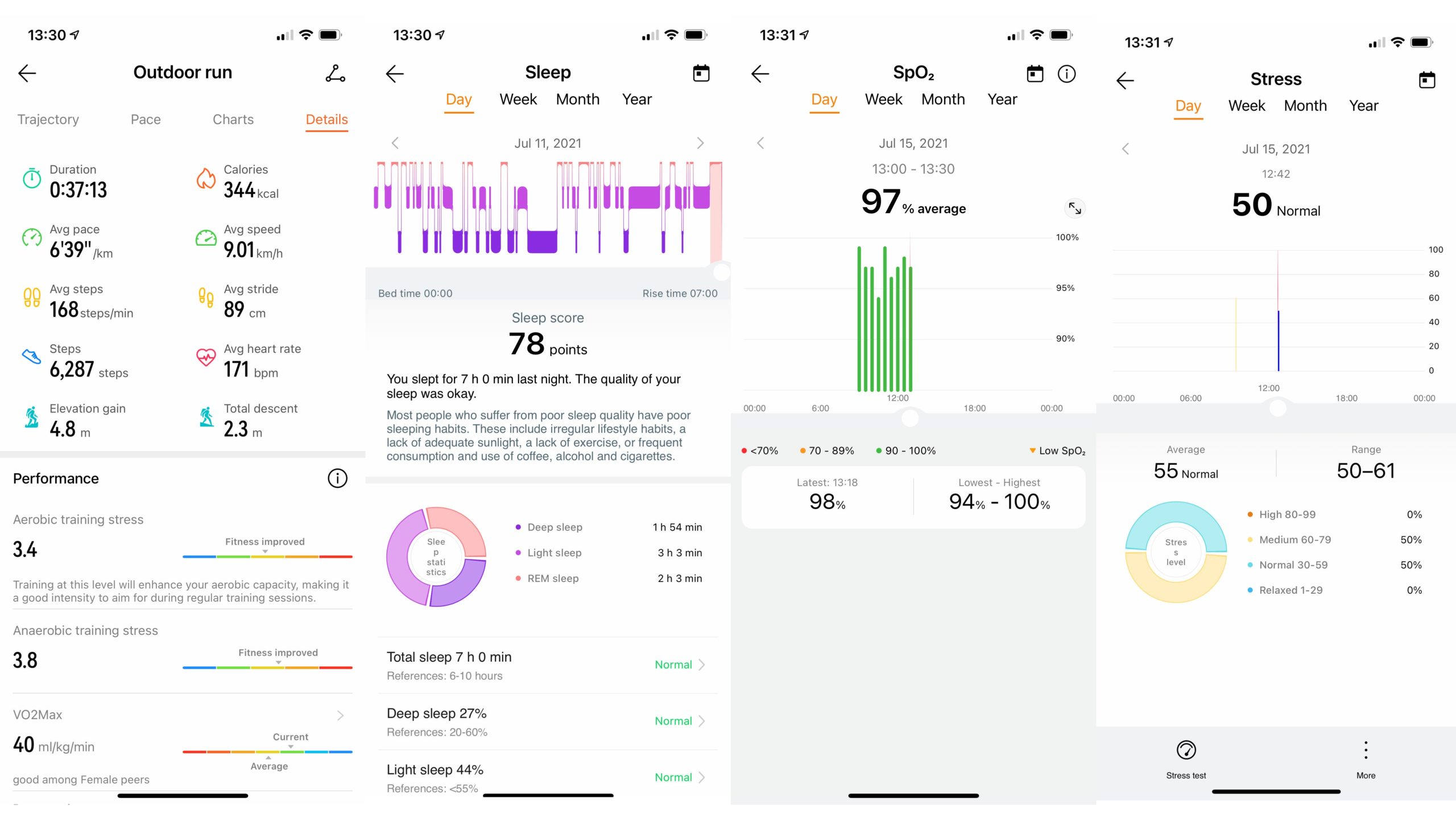
Another quibble is that no matter how many times I set my units to Imperial, the Huawei Health app would always switch it back to metric. It’s as easy as re-setting it to Imperial but that’s so irksome — and I say that as someone who’s decent at converting Imperial to metric after spending several years abroad.
GPS was also wonky on my review unit. My watch was never quite able to lock onto a signal before starting a workout, and many times it was unable to fetch the weather for the same reason. This ultimately didn’t matter much because on all my recorded runs were only ever about a tenth of a mile off compared to my Apple Watch SE and phone. It was just puzzling. As for heart rate, I noticed the Watch 3 was always about 5-7 bpm higher than my Polar H10 and Apple Watch SE. That’s minor but perhaps a thing to note if you like heart rate zone training.
The absolute worst, and I mean worst fitness feature, was the watch’s tendency to broadcast my metrics every 10 minutes in a disembodied robotic voice. I’d be 10 minutes into a strength workout at the gym and I’d hear a loud readout of my heart rate. Or, I’d be on a run outside and catch the bewildered stares of passersby. You can turn this feature off, thankfully, but I still embarrassed myself in public a handful of times.

Otherwise, the health tracking is on par with other fitness trackers I’ve tested. My SpO2 readings were about the same as the ones I’d get on the Fitbit Luxe, as were sleep breakdowns — though it wasn’t quite as good at detecting when my pets woke me up in the middle of the night. The stress metric is similar to the ones on the Zepp smartwatches, in that you get a score that’s not particularly actionable. What I found more useful were workout performance breakdowns, where I could see how much aerobic and anaerobic stress I’d put on my body, my VO2 Max, and how much time I should rest before my next session.
Bottom line: It’s a decent health and activity tracker, so long as you’re OK with the occasional quirk or wonky app sync. Just turn that stupid broadcast feature off.
Is There Hope for the Huawei Watch 3?
This is usually where I talk about whether a smartwatch is worth the price, and who it’s best suited for. Except, for Gizmodo readers in the U.S., the Watch 3 isn’t an option. And that’s a shame because, for all its quirks, this is a solid smartwatch. This is especially true if you’re looking for more of a fitness tracker in a smartwatch body.

But if you happen to be living in the UK, or in any other country where you can actually buy this watch, the price is not entirely right either. At £350, this is bordering on premium flagship prices. And, if every advertised feature were available, that price would be more worth it. However, you’d have to do some digging as to whether your combination of smartphone OS and watch would support the features you want. For most people, that’s too much effort when there are several excellent budget smartwatches, hybrid analogs, and even “premium” fitness trackers out there.
Right now, I don’t think this watch has much of an audience outside of China. However, it’s nice to see Huawei hasn’t entirely given up. It’s made some good smartwatches in the past and this is a category that isn’t going away any time soon. What’s so frustrating about the Watch 3 is you can clearly see how good this smartwatch could have been if given the chance. Maybe someday soon we’ll get to see a Huawei smartwatch that isn’t held back by trade restrictions. Until then, this will have to do.
